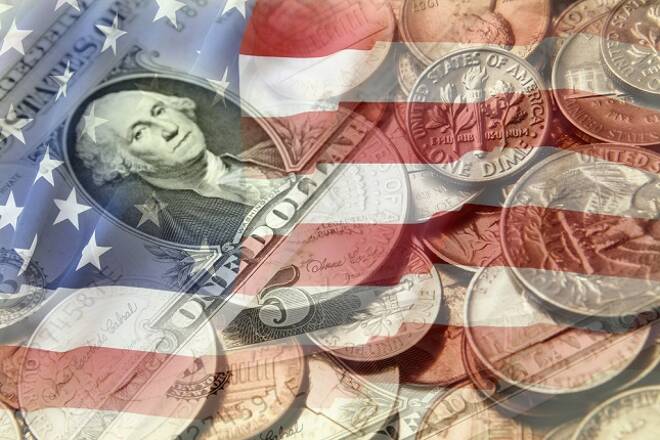Advertisement
Advertisement
US GDP Grows at Fastest Pace Since 2014; Stocks Weaken as Twitter, Intel Disappoint
By:
The 4.1 percent pace represents the fastest rate of growth since the 4.9 percent in the third quarter of 2014 and the third-best growth rate since the Great Recession. U.S. consumer sentiment declined in July according to the University of Michigan. The index fell to 97.9 from 98.2 in June, as both the assessment of current economic conditions and expectations fell. Economists had forecast a 97.3 reading. The major U.S. equity markets are trading lower shortly before the close on Friday as the strong U.S. economic growth report took a backseat to poor earnings from Intel and Twitter.
U.S. equity markets retreated, Treasury yields fell and the dollar weakened despite a U.S. Gross Domestic Product report that showed the economy grew at a robust 4.1 percent pace in the second quarter. While posting its best performance since 2014, the report also raised hopes that the economy was positioning itself for even better numbers in the future as it pulls out of an almost ten-year range.
One reason for the muted response to the strong figure was that it met economist expectations. Another reason may have been that it represents “stale” data now that we’re almost 30 days into the next quarter.
The 4.1 percent pace represents the fastest rate of growth since the 4.9 percent in the third quarter of 2014 and the third-best growth rate since the Great Recession. Furthermore, the Commerce Department also revised its first-quarter reading up from 2 percent to 2.2 percent.
The main catalysts behind the strong growth were increased consumer and business spending. Increases in exports and government spending also helped support growth. According to data, personal consumption expenditures rose 4 percent while business investment grew 7.3 percent. Federal government outlays also jumped by 3.5 percent.
Analysts said the jump in exports was related to increased activity by farmers who rushed to get soybeans to China ahead of expected retaliatory tariffs.
Data also showed that GDP would’ve been higher if not for declines in private inventory investment and residential fixed investment.
Aiding in the surge in growth were the tariffs as well as the massive tax cut enacted earlier this year.
Other U.S. Economic Reports
U.S. consumer sentiment declined in July according to the University of Michigan. The index fell to 97.9 from 98.2 in June, as both the assessment of current economic conditions and expectations fell. Economists had forecast a 97.3 reading.
“Despite the expectations of higher inflation and higher interest rates during the year ahead, consumers have kept their confidence at high levels due to favorable job and income prospects,” the University of Michigan said.
U.S. Equity Markets
The major U.S. equity markets are trading lower shortly before the close on Friday as the strong U.S. economic growth report took a backseat to poor earnings from Intel and Twitter.
Late in the session, the benchmark S&P 500 Index was trading about 1 percent lower. The blue chip Dow Jones Industrial Average was down nearly 0.50 percent and the NASDAQ Composite was off about 1.60 percent.
Intel declined more than 9.5 percent after announcing delays on its next generation chips. The company did report better-than-expected earnings, however.
Twitter, which reported earnings that matched expectations, dropped more than 19 percent after it said its number of monthly active users fell.
About the Author
James Hyerczykauthor
James Hyerczyk is a U.S. based seasoned technical analyst and educator with over 40 years of experience in market analysis and trading, specializing in chart patterns and price movement. He is the author of two books on technical analysis and has a background in both futures and stock markets.
Advertisement
